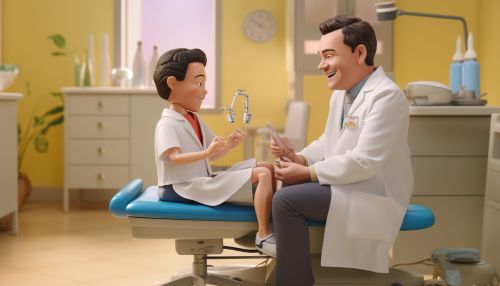Dwarfism in Biology
Overview
Dwarfism, also known as short stature, is a condition characterized by a person's height being significantly less than the average for their age and gender. It is generally defined in adult humans as a height of 147 centimeters (4 feet 10 inches) or lesssource. The term "dwarfism" is often associated with humans, but it can also refer to a similar condition in animals and plants, where the organism is significantly smaller than the average size for its speciessource.


Causes
Dwarfism can be caused by more than 200 distinct medical conditions, each with its own separate symptoms and characteristicssource. These conditions can be grouped into two main categories: disproportionate dwarfism and proportionate dwarfism.
Disproportionate Dwarfism
Disproportionate dwarfism is characterized by an average-size torso and shorter arms and legs or a shortened trunk with longer limbs. In most cases, the head is disproportionately large compared to the body. Achondroplasia is the most common form of disproportionate dwarfism, accounting for about 70% of all casessource. It occurs as a sporadic mutation in approximately 80% of cases, while in 20% of cases it is inherited from a parent who also has the conditionsource.


Proportionate Dwarfism
Proportionate dwarfism refers to a condition where the body parts are in proportion but the person is smaller than average. This type of dwarfism is often due to hormonal deficiencies, and can sometimes be treated medicallysource. Growth hormone deficiency is the most common cause of proportionate dwarfismsource.


Diagnosis
Diagnosis of dwarfism is usually based on physical characteristics. If dwarfism is suspected, the individual's height, weight, and body proportions are compared to standard growth charts. X-rays of the bones can reveal whether a child's bones are growing normally. Genetic testing can confirm the diagnosis of certain types of dwarfism that have a known genetic causesource.
Treatment
There is no cure for most cases of dwarfism. Treatment is focused on addressing the specific symptoms and preventing or treating complications. Growth hormone therapy can help children with proportionate dwarfism grow taller. Surgery can sometimes help address the complications of disproportionate dwarfism, such as pressure on the spinal cord or problems with bone alignmentsource.


Social and Psychological Aspects
People with dwarfism often face social and psychological challenges. These can include discrimination, prejudice, and social isolation. Many people with dwarfism report feeling marginalized or stigmatized because of their height. However, with support and counseling, many people with dwarfism lead healthy, fulfilling livessource.
See Also
Achondroplasia Growth hormone deficiency Genetic disorders
References
1. "Dwarfism." Mayo Clinic. https://www.mayoclinic.org/diseases-conditions/dwarfism/symptoms-causes/syc-20371969 2. "Dwarfism in Animals and Plants." Encyclopedia Britannica. https://www.britannica.com/science/dwarfism 3. "Dwarfism." MedlinePlus. https://medlineplus.gov/ency/article/001669.htm 4. "Achondroplasia." Genetics Home Reference. https://ghr.nlm.nih.gov/condition/achondroplasia 5. "Achondroplasia." National Organization for Rare Disorders. https://rarediseases.org/rare-diseases/achondroplasia/ 6. "Proportionate Dwarfism." Healthline. https://www.healthline.com/health/dwarfism-proportionate 7. "Growth Hormone Deficiency." MedlinePlus. https://medlineplus.gov/growthhormonedeficiency.html 8. "Dwarfism Diagnosis." Mayo Clinic. https://www.mayoclinic.org/diseases-conditions/dwarfism/diagnosis-treatment/drc-20371973 9. "Dwarfism Treatment." Mayo Clinic. https://www.mayoclinic.org/diseases-conditions/dwarfism/diagnosis-treatment/drc-20371973 10. "Living with Dwarfism." Little People of America. http://www.lpaonline.org/the-lpa-experience
